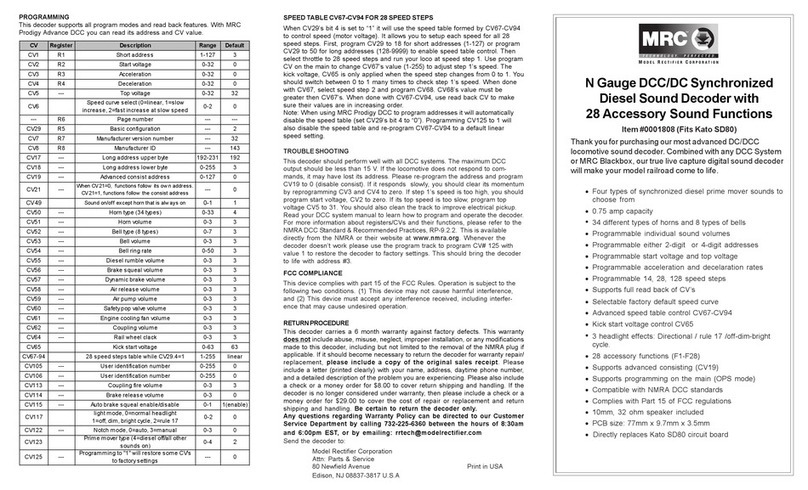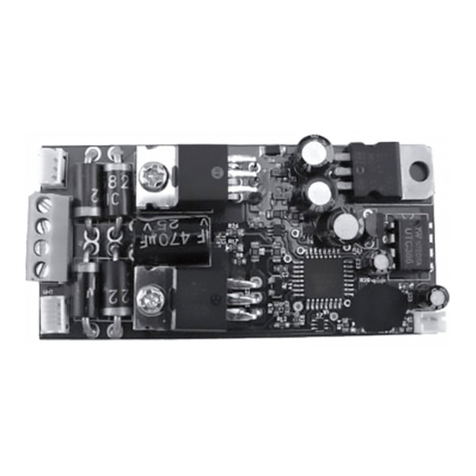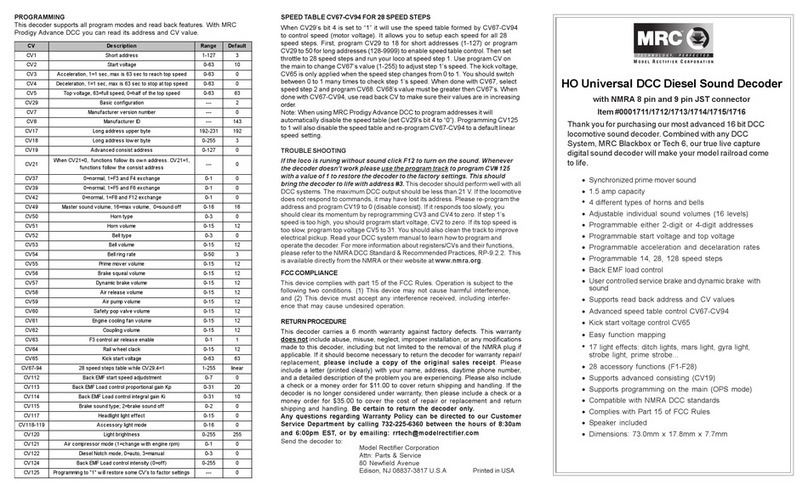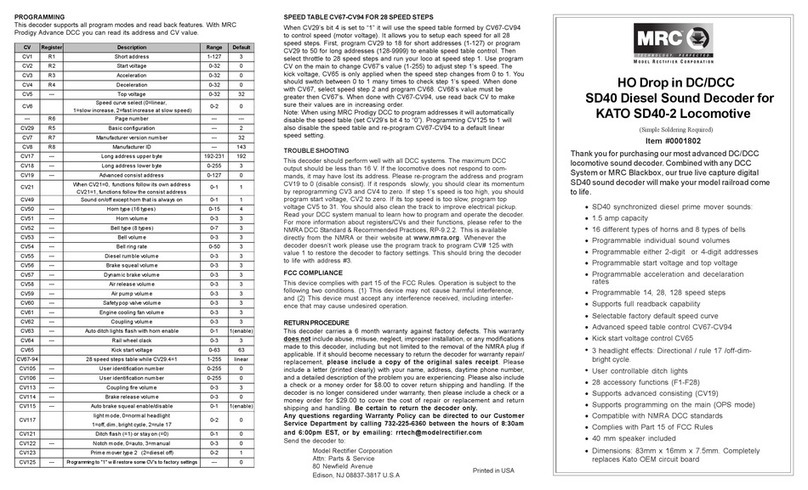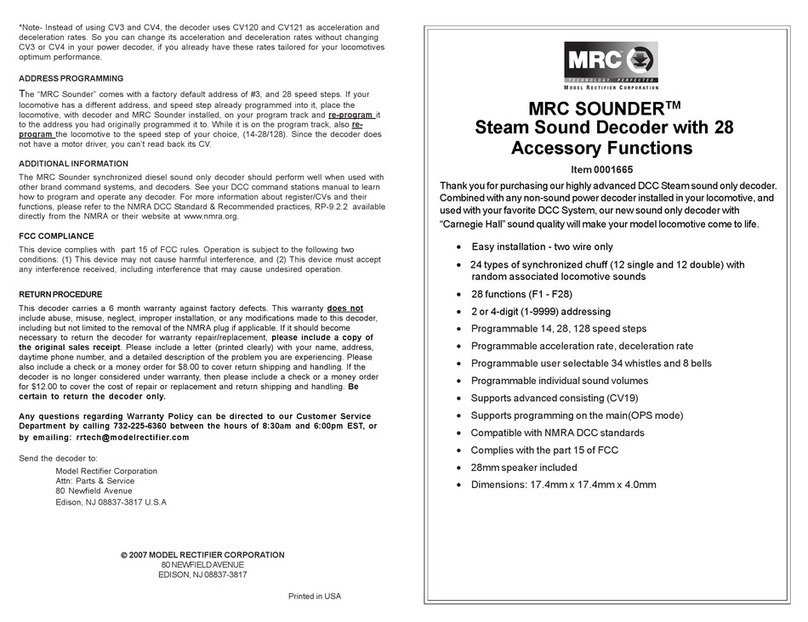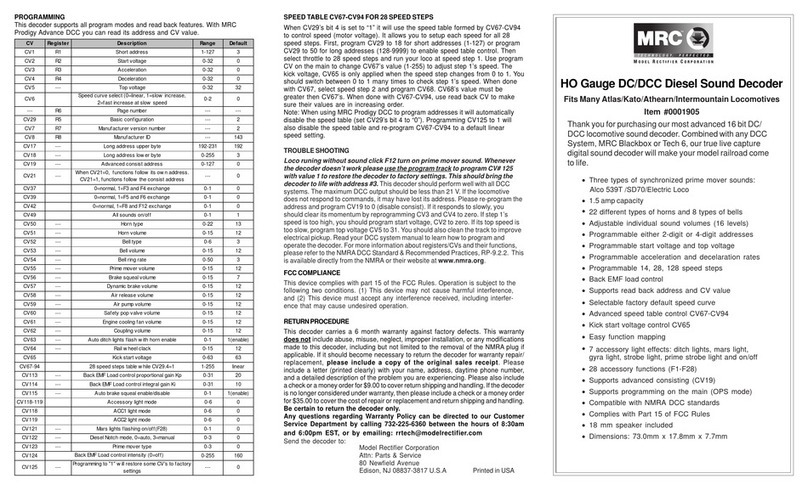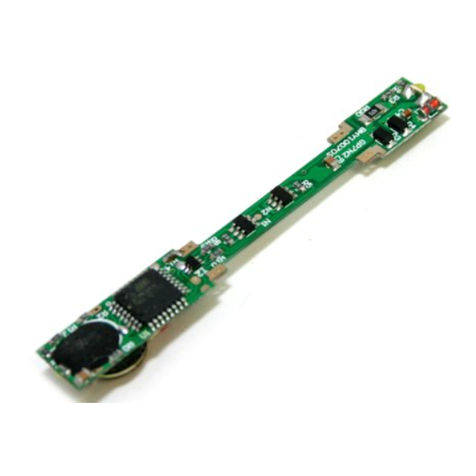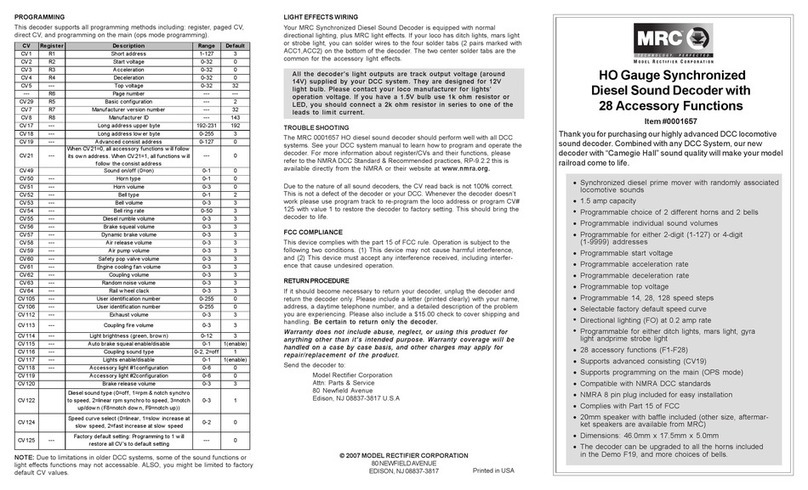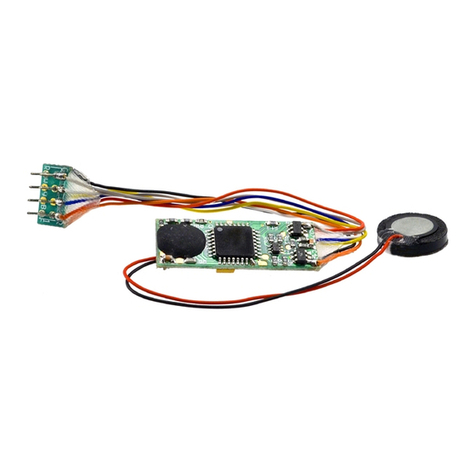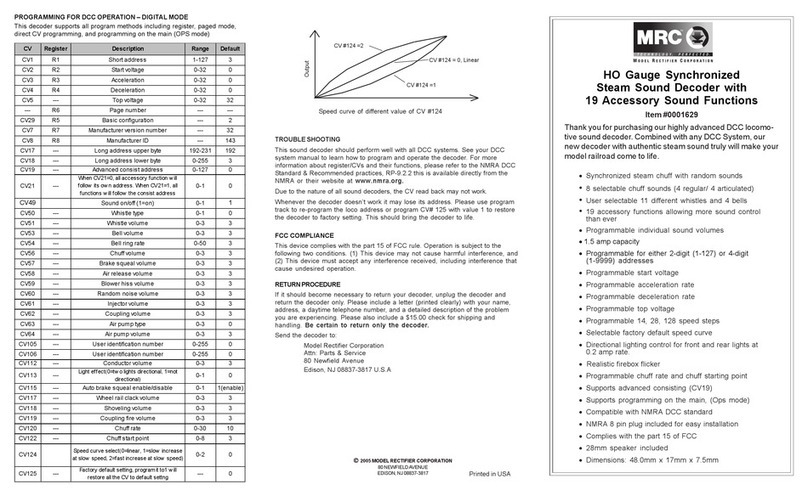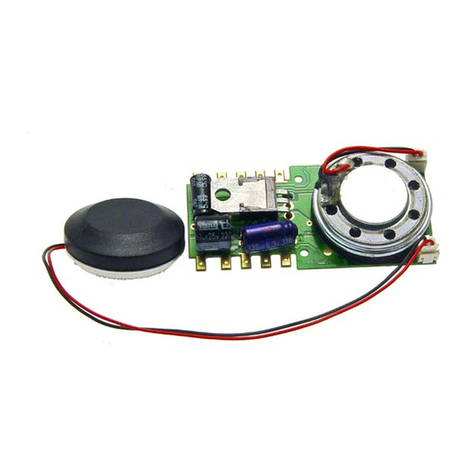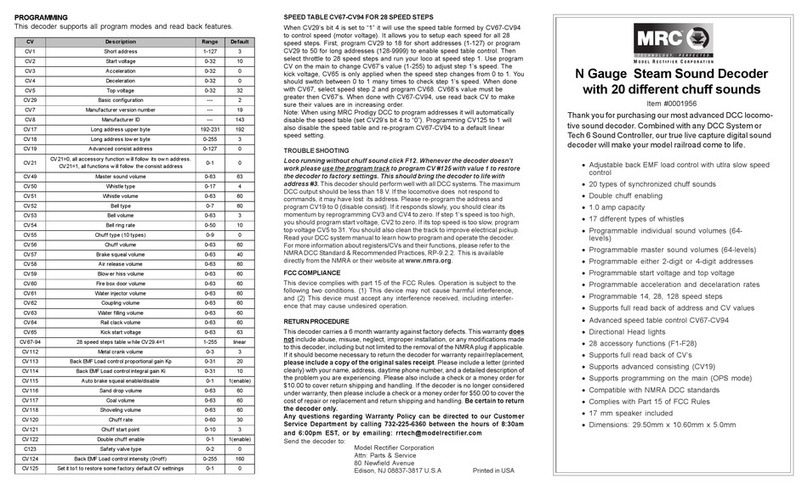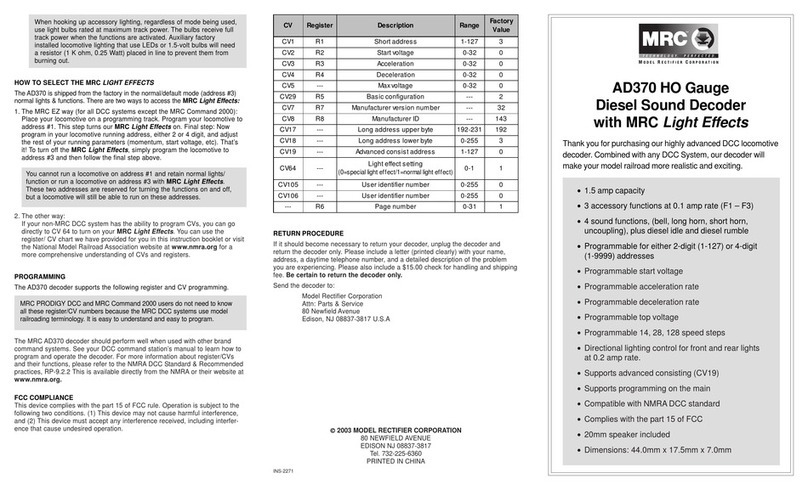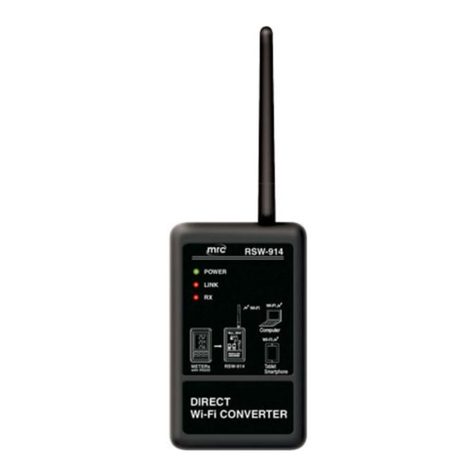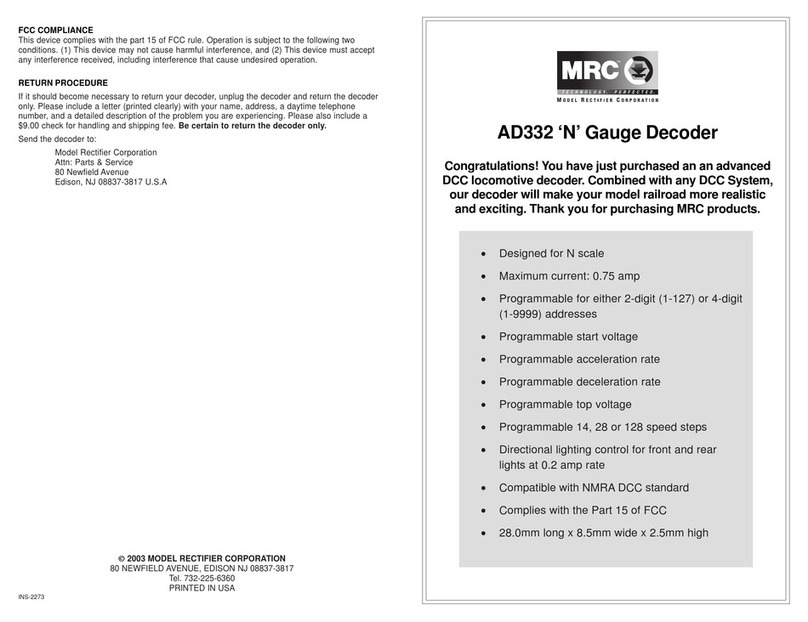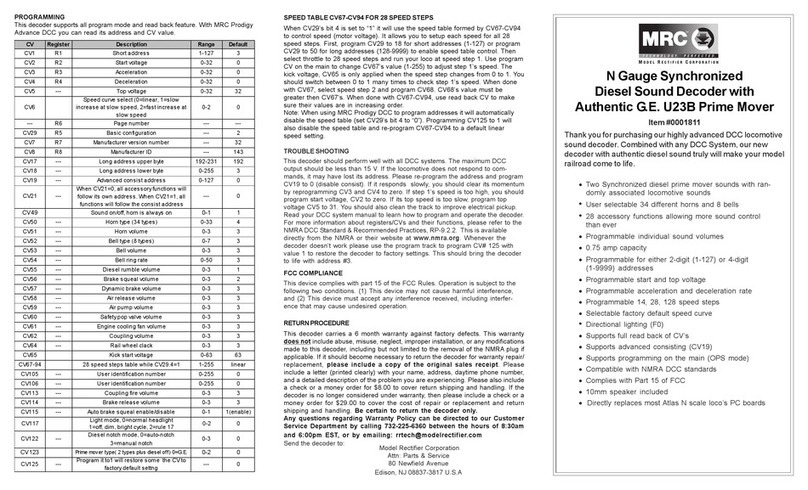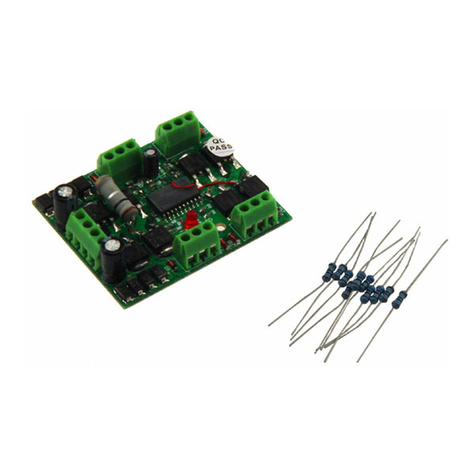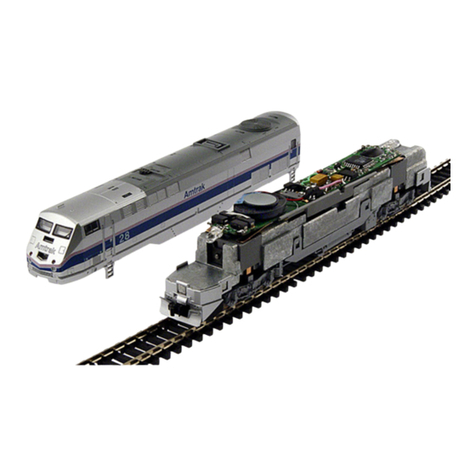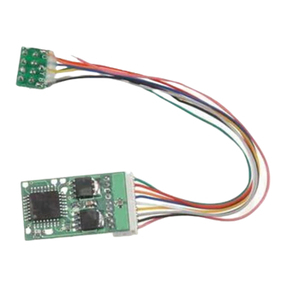
Function Idle/Moving
F1 Bell on/off
F2 Horn
F3 Mars light (ACC1& ACC2) on/off
F4 Coupling 1
F5 Brake release (idle) / brake squeal (moving)
F6 Dynamic brake on/off
F7 Air hose firing/uncoupling lever
F8 3 times will shut down when in idle / Manual notch down
F9 Engine cooling fan / Manual notch up
F10 Rail wheel clack (only moving)
F11 Traction air compressor
F12 Change prime diesel mover type, (CV123, 4 types)
F13 Master volume reduce by 1
F14 Master volume increase by 1
F15 Air compressor
F16 Flange squeal
F17 Air release
F18 Change bell type (use F1 to turn off bell after adjustment)
F19 Horn type select (total 22 different horns)
F20 Associated loco sound
F21 Change bell volume (use F1 to turn off bell after adjustment)
F22 Change horn volume
F23 Change diesel rumble volume
F24 Safety valve pop
F25 Air release
F26 Flange noise
F27 Sand drop
F28 Ditch light flash enable/disable with Air release (CV 121)
OUT OF SYNC TIME CV120
When you select dual primer mover the two primer mover sounds are generated
by two different sound processors. These two engine sounds can be
programmed to be out of sync. The amount of out of sync time is controlled by
CV120’s value times 8 ms. For example, if CV120=150, then the out sync time
equal 1.2 seconds (150x0.008)
ADDITIONAL INFORMATION
The MRC 1902 sound decoder should perform well when used with other brand
DCC systems. See your DCC Systems manual to learn how to program and
operate the decoder. For more information about register/CVs and their functions,
please refer to the NMRA DCC Standard & Recommended practices, RP-9.2.2 this
is available directly from the NMRA or their website at www.nmra.org.
INSTALLATION
Refer to the instructions that came with your E8/E9 locomotive for removal of the
body shell. Remove the screws that hold down the original circuit board. Gently
lift the original circuit board and note the locomotives wire colors and locations
from where they originate inside the chassis. Before remove the wires from the
circuit board study all wires and identify the four wheel pickup wires (each side
has two wires connnected together) and two motor wires. Lights wiring may
have different versions dependent on road name. For example, the sample we
have has yellow and black wire for headlight, and red, blue(common wire) and
white for mars light. Remove the plastic clips that hold these wires to the original
circuit board, and carefully remove the wires from the circuit board. You can use
the clips to attach the wires to the decoder, although we do recommend you
solder the wires to the decoder.
The decoder is set up to use the bulbs that came with the locomotive. Install the
wires to the decoder as noted in the following diagram. Make sure to twist the
wire leads tightly as not to have any stray strands, as they could cause a short
circuit on the decoder. Use the plastic clips to attach the wires to the decoder.
The speaker side is the top of the decoder. The common wire is set to 5V for low
voltage bulbs or LED’s. If the light is not bright enough you can use any wheel
pickup tab as common tab. You may need series a 1k resistor if the light is bright.
This stereo decoder comes with two speakers for the E8/9 which has two diesel
engines. Speaker # 2 should be placed in the front. If you use the decoder for single
engine locomotives, or if there is no room for 2 speakers, you do not have to install
speaker # 2. Use of this decoder in older Proto 2000 Locomotives may necessitate
changing the light bulbs.
TEST
All MRC decoders have been factory programmed with address #3, 28/128 speed
steps and maximum top voltage. After you have finished your decoder installation
you are ready to test it. Never run the installed decoder on your layout without first
passing the test. You may damage the decoder if it is not wired correctly or if you
have not properly isolated the motor and lights.
Put the loco on the test track. Select the “Run” mode of your DCC system and select
or acquire address #3. Advance the throttle and the loco should move forward.
Push the light button, [F0], and the front headlight should come on. Change the
direction of the loco, the loco should change direction and the rear headlight, [if
equipped], should come on. The locomotive cannot get to full speed, due to the
resistor. If the loco moved forwards and backwards, and the light{s} came on, you
did a great job. Congratulations!
Do not run the loco for an extended period of time on the test track or the resistor
will overheat.
DCC OPERATION
This decoder has diesel start up and shut down features. Press any function key
to start up the engine before operating the loco. To shut down the engine you must
bring the loco to idle and then press F8 three times. If the loco has been previously
shut down you will have to start up the engine. You can use F19 to select one of 22
different horns and use F18 to select 1 of 8 bells. If your DCC System does not have
this many functions, you will have to use CV programming to select these features.
The decoder is defaulted to manual notching. You can program CV122 to 0 to set
automatic notch for automatic operation. You can use F9 to notch up and use F8 to
notch down. Using this feature gives you the true to life feeling of operating a real
locomotive. When you change diesel volume you may need to notch up or down to
make the change effective.
This decoder should perform well with a DC power pack. However, you can only
have the default prime mover sounds. If you want full control of all sounds on DC,
please use the MRC Tech6 to operate the decoder.
CV123 DIESEL TYPE CONTROL
Make a Test Track
Before you start with your decoder installation, we strongly recommend building a
test track that uses a 27-ohm, 1/2 watt resistor to limit current. Only test your
installed decoder on the test track. The test track will prevent any damage due to
an incorrectly installed decoder.
CV118/119 value ACC#1/ACC#2 Light effect
0 Ditch light ( CV118=0, CV119=0)
1Gyralight
2Marslight
3 Prime strato light
4 Single strobe light
5 Double strobe light
6on/off
CV123 value Diesel type
0 Dual EMD 567B prime mover1
1 Single EMD 567B prime mover1
2 Dual AlCo 539T prime mover2
3 Single AlCo 539T prime mover2
4 All sounds off
LIGHT EFFECT PROGRAMMING CHART FOR CV#118/119
Use F3 to turn on/off ACC1 & ACC2. For ditch lights both CV118 and CV119 must
be 0. Use F28 to enable/disable flash. When you blow the horn the ditch lights
will flash. The ditch lights will remain flashing for several seconds after horn is
off.
DCC base unit
Power supply
Test track
27 ohm resistor
Figure 2. Diagram of test track
Right pickup
Left pickup
Motor
Motor
Front light Rear light
Com(5V) Speaker1(engine1, horn bell....)
Acc1 Acc1
Com(5V) Speaker2(engine2, horn....)












